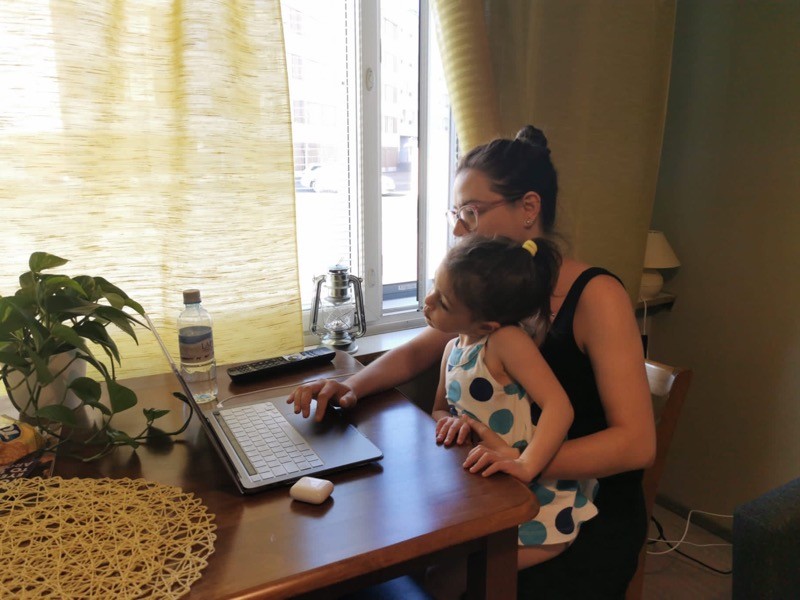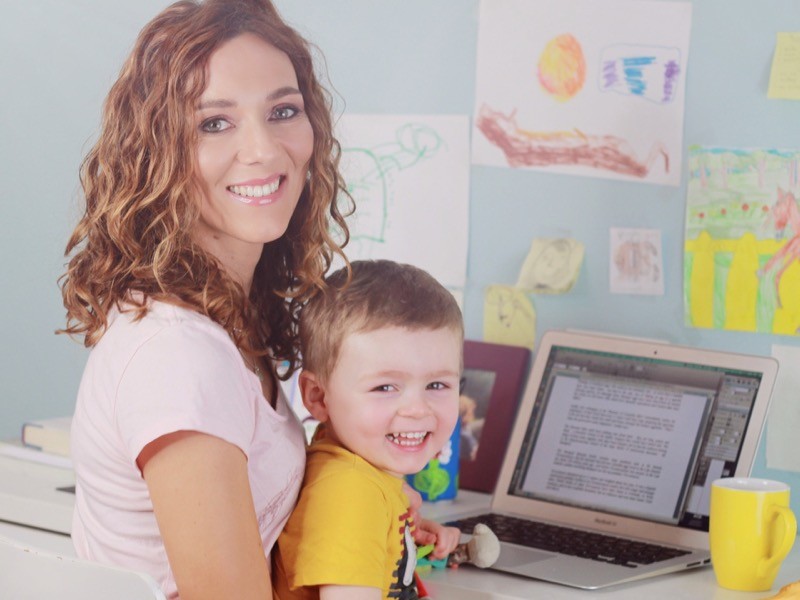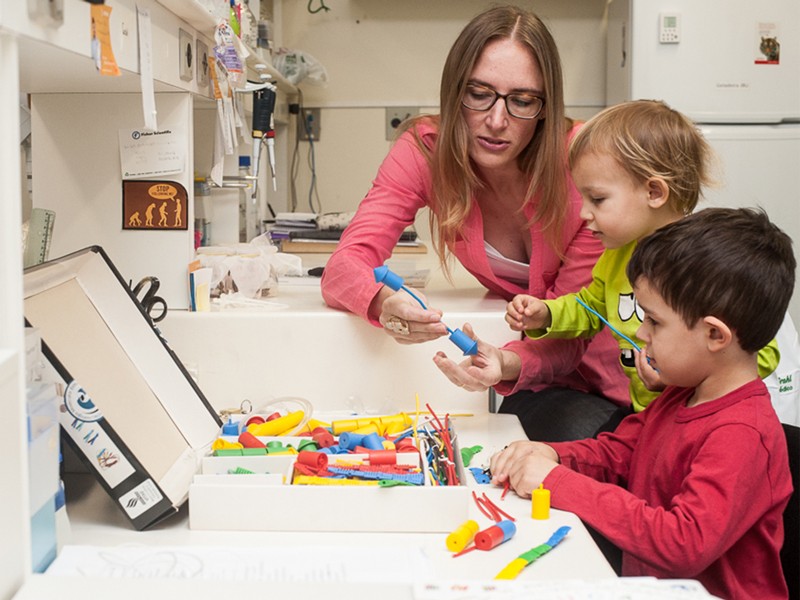Yhasmin Moura’s research was not the only thing on her mind in 2017 when she was considering postdoctoral positions in the United Kingdom and her home nation of Brazil. Moura was pregnant at the time, so parental-leave policies were a top concern.
Even though it meant moving far away from her extended family, Moura chose a placement at Lancaster University, UK, largely because it offered a full year of paid maternity leave. The Brazil placement would have given her only four months of unpaid maternity leave. “The pregnancy defined my position and determined a completely different future for me,” says Moura, a geographer and remote-sensing researcher who is now a postdoc at the Karlsruhe Institute of Technology in Germany.
For many scientists, the transition from a PhD to a faculty position often happens when they are starting or building families, Moura says. It’s no wonder, she adds, that many early-career researchers make crucial, life-altering decisions based on institutions’ policies and attitudes around parenthood.
Moura was among 176 attendees from 46 nations at a virtual conference organized in May by Mothers in Science (MiS), an international non-profit organization that aims to boost recruiting and retention of women in science careers. The conference highlighted the well-documented ‘motherhood penalties’ that mothers in science, technology, engineering and mathematics (STEM) face as they try to build their careers. Scientist-mothers face discrimination1, drops in productivity2 and inequities in wages and promotion3,4, all of which contribute to them dropping out of the full-time STEM workforce5. The conference also pointed out that the COVID-19 pandemic revealed the stark pressures on mothers in STEM and highlighted the practices and policies that can help people to balance research and motherhood.
To better understand the penalties and barriers of motherhood, MiS conducted a survey in 2020 of nearly 9,000 people from 128 countries. The respondents came from all sectors of STEM careers and fields, and comprised 58% mothers, 22% women without children, 13% fathers and 7% men without children. Among the preliminary results presented at the conference, more than one-third (34%) of mothers in full-time careers in STEM globally had left those positions after their first child.
A separate study5 by US-based researchers Erin Cech and Mary Blair-Loy found that, in the United States, where family-leave policies are often sparse or absent, the proportion of mothers in full-time STEM careers who leave after their first child is as high as 43%. As a result, scientist-mothers are under-represented at the topmost levels of academia in that nation and elsewhere. Women comprise less than one-quarter (24%) of the top earners at elite US universities, according to a 2021 study6 by the American Association of University Women.
Productivity penalty
At every career stage, the MiS survey found, scientist-mothers published fewer papers compared with scientist-fathers. This gap increases with time, so that by nine years after their first child, mothers had on average published ten fewer papers than had fathers. These findings were consistent with another study2 published this year and presented at the conference that found a significant productivity penalty for mothers.
In the MiS survey, 38% of scientist-mothers worldwide said that they had received fewer offers for professional opportunities since becoming a parent, compared with just 13% of scientist-fathers. And nearly two-thirds (61%) of scientist-mothers, compared with 38% of scientist-fathers, said that parenthood had negatively affected their career.
Ryan Watkins, research manager for MiS and a planetary scientist for NASA who works from St Louis, Missouri, summarized the data for conference attendees: the barriers faced by scientist-mothers are systemic, structural and universal, she told the audience.
Keynote speaker Isabel Torres, co-founder and chief executive of MiS, noted the vicious cycle that scientist-mothers face. The barriers are largely invisible, so mothers — and their colleagues and supervisors — assume that they can persevere through hard work alone, she said in her talk. As a result, many scientist-mothers take on more teaching, service or outreach work to build up their CVs, even though they have fewer hours to spare. Then they hit the wall. “Mothers can’t ‘do it all’ because they are already doing a lot more,” Torres said in her address. “Then, when a mom chooses to leave work or to work part-time, it looks like a personal decision.”
Scientist-fathers, she noted, rarely face this ‘choice’.
Other researchers have corroborated both the ‘hidden’ nature of parenthood in academic research and the productivity penalty for academic scientist-mothers.
Aaron Clauset, a computer scientist at the University of Colorado Boulder, Allison Morgan, then a doctoral student, and their colleagues documented a publication deficit for scientist-mothers in a 2017–18 survey of more than 3,000 tenure-track faculty members from 450 departments at US and Canadian institutions. Respondents were in the fields of computer science, business and history. The study’s results, which Clauset presented at the conference, showed that mothers in the sample published 74–83% fewer papers than fathers during a 15-year span early in their careers2.
Yet Clauset and Morgan’s study found that, in the five years before a researcher’s first child, future mothers’ and fathers’ productivity rates are nearly identical. With the arrival of the first child, the mothers’ productivity drops immediately, by up to 48%. This drop in productivity is not seen for researcher-fathers, nor for non-parents who are the same age or at the same career stage. The analysis found that mothers in computer science produce, on average, nearly 18 fewer papers than do researcher-fathers over the 10 years after the birth of their first child — a gap that would take 5 extra years of work in a career to close.
Despite the barriers they face, mothers make up a significant slice of academia. Clauset and Morgan’s study found that among faculty members over the age of 40, nearly three-quarters (71%) of women are mothers, and that 82% of men are fathers. “A large majority of faculty are parents, but we often hide our families from our jobs in academia,” says Clauset. “It gives the impression that we don’t have a family, or that we don’t care about our families. That is so wrong.”
Uneven parental leaves
More than one-third of institutions covered in the Clauset and Morgan study offered no paid parental leave. For those that did, the average length was 15 weeks for mothers and 12 weeks for fathers (for an interactive breakdown of these data, see go.nature.com/3aecocq).
All of this suggests to Clauset that parental-leave policies ignore opportunities to recruit and retain female faculty members. Universities should all be offering gender-neutral parental leave as a competitive advantage and making it easy to use, he says.
Gender-neutral leave policies that give women and men equal time off are more helpful than policies that give women extra time, says Torres. Uneven policies “set families up for unequal childcare burdens later”, she says. “If only moms take leave, then they fall further behind in their careers.”
She points to a proposed law in Iceland as a model for equalizing parental leaves. The law would give both mothers and fathers six months of leave, with one month allowed to be transferred between the parents.
Biologist Fernanda Staniscuaski presented to conference attendees some ways that parent scientists have advocated for making maternity more visible in the Brazilian research ecosystem. She founded the group Parent in Science in 2016, which has promoted several solutions.
In 2018, the group petitioned Brazil’s National Council for Scientific and Technological Development (CNPq) — which runs a national database called Plataforma Lattes of nearly 7 million registered researchers and their CVs — to include a field on the CV to account for maternity leave. (In Brazil, mothers get 4–6 months of paid maternity leave, whereas fathers get 5–20 days.)
“It’s quite important, not just to show the reason for the drop in productivity, but also because it makes maternity visible,” says Staniscuaski, who is an associate professor at the Federal University of Rio Grande do Sul in Porto Alegre.
The Brazilian group also petitioned for a ‘maternity clause’ to be added to research grant or fellowship applications “to make the competition more fair for mothers”, Staniscuaski says. Since 2018, several Brazilian funding agencies have agreed to the clause, which uses either a longer span of years or a correction factor to equalize the assessment of mothers’ productivity with that of their non-parent peers.
In May, Staniscuaski’s university voted to implement the maternity clause during evaluations for newly recruited female staff who had taken maternity leave in the previous 6–7 years. “I thought it would be a harder fight than it actually was,” she says. “But we have the productivity-drop data to back it up, and you cannot argue with the numbers.”
Buying time for new mothers
When Parent in Science surveyed Brazilian researchers during the pandemic7, just 10% of Black graduate-student mothers reported being able to continue their dissertation work. “We were afraid that this would drive them away from graduate school,” says Staniscuaski.
So the group crowd-funded more than 100,000 Brazilian reais (US$19,000) to support the cohort through the Tomorrow Program, which funds final-year doctoral-student mothers from minority ethnic groups. Each student receives 705 reais per month from April to December 2021 or until they graduate, whichever comes first. Recipients can use the funds for whatever will help them to finish their PhD programme. The need for the initiative was overwhelming, Staniscuaski says, with 750 applicants for 26 slots.
Similarly, the Christiane Nüsslein-Volhard Foundation in Germany, started by the eponymous Nobel-laureate developmental biologist in 2004, supports PhD-student and postdoc mothers. The programme supports 40–50 scientists each year with €400 (US$474) per month for up to 2 years. The mothers must either be getting or have earned a PhD in Germany, but use of the funds is unrestricted.
“It is buying them some freedom to cope with their duties” as both scientists and mothers, said Gerlind Wallon at the conference, who is deputy director of the European Molecular Biology Organization, based in Heidelberg, Germany, and a director of the foundation.
Getting leaders to take notice
In the wake of the conference, its organizers are wondering how to ensure that proven policies and solutions, such as fellowships for women returning to work (see ‘Support structure’) and Brazil’s maternity clause, become widespread globally.
Katie Perry, chief executive of the Daphne Jackson Trust, which supports UK scientists returning to research careers after family-care breaks, says that she pitches returners as those who have sharpened their multitasking, prioritizing and decision-making skills. But she thinks that real change will come when policies are hitched to funding, such as when the UK’s National Institute for Health Research required medical-school departments to achieve a certain gender-equity ‘grade’ to receive funding. Decision-makers and other administrators took notice. “Gender equity suddenly went from a nicety to a necessity: we’ve got to do it or we will get left behind in the competition for funding,” she says.
Clauset agrees that funders have to get on board. “The federal grant-making process assumes families don’t exist,” says Clauset. And, he adds, funding agencies need to make family-friendly policies more equitable among graduate students, postdocs and principal investigators.
Both Perry and Clauset promote another useful tactic: publicly identifying institutions that exacerbate and perpetuate bad practices. “I’d like to see slides at a scientific conference that have five examples of universities with excellent practices and five universities that should be doing better,” says Perry. “People do not want to be on the naughty list.”




